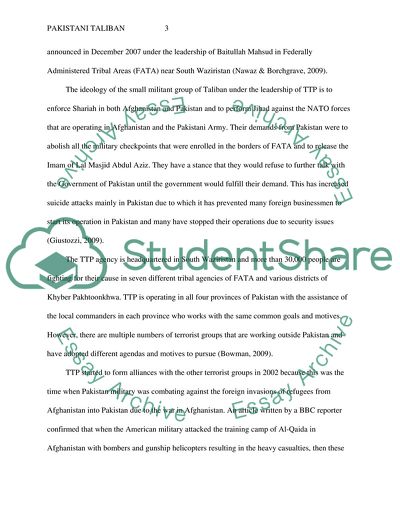Cite this document
(Pakistani Taliban Research Paper Example | Topics and Well Written Essays - 3750 words, n.d.)
Pakistani Taliban Research Paper Example | Topics and Well Written Essays - 3750 words. Retrieved from https://studentshare.org/politics/1774696-tehrik-i-taliban-pakistan-or-pakistani-taliban
Pakistani Taliban Research Paper Example | Topics and Well Written Essays - 3750 words. Retrieved from https://studentshare.org/politics/1774696-tehrik-i-taliban-pakistan-or-pakistani-taliban
(Pakistani Taliban Research Paper Example | Topics and Well Written Essays - 3750 Words)
Pakistani Taliban Research Paper Example | Topics and Well Written Essays - 3750 Words. https://studentshare.org/politics/1774696-tehrik-i-taliban-pakistan-or-pakistani-taliban.
Pakistani Taliban Research Paper Example | Topics and Well Written Essays - 3750 Words. https://studentshare.org/politics/1774696-tehrik-i-taliban-pakistan-or-pakistani-taliban.
“Pakistani Taliban Research Paper Example | Topics and Well Written Essays - 3750 Words”, n.d. https://studentshare.org/politics/1774696-tehrik-i-taliban-pakistan-or-pakistani-taliban.


